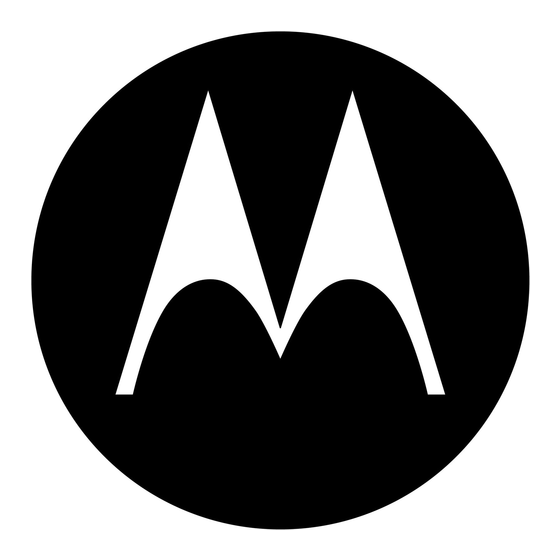Motorola PRO7350 기본 서비스 매뉴얼 - 페이지 18
{카테고리_이름} Motorola PRO7350에 대한 기본 서비스 매뉴얼을 온라인으로 검색하거나 PDF를 다운로드하세요. Motorola PRO7350 30 페이지. Pro series

3-2
since this could cause the liquid to collect in unwanted places. After completing of the cleaning
process, use a soft, absorbent, lintless cloth to dry the area. Do not brush or apply any isopropyl
alcohol to the frame, front cover, or back cover.
NOTE Always use a fresh supply of alcohol and a clean container to prevent contamination
by dissolved material (from previous usage).
3.3
Safe Handling of CMOS and LDMOS Devices
Complementary metal-oxide semiconductor (CMOS) devices are used in this family of radios, and are
susceptible to damage by electrostatic or high voltage charges. Damage can be latent, resulting in
failures occurring weeks or months later. Therefore, special precautions must be taken to prevent
device damage during disassembly, troubleshooting, and repair.
Handling precautions are mandatory for CMOS circuits and are especially important in low humidity
conditions. DO NOT attempt to disassemble the radio without first referring to the following CAUTION
statement.
CAUTION: This radio contains static-sensitive devices. Do not open the radio
!
unless you are properly grounded. Take the following precautions when
working on this unit:
Store and transport all CMOS devices in conductive material so that all exposed leads are
shorted together. Do not insert CMOS devices into conventional plastic "snow" trays used
for storage and transportation of other semiconductor devices.
Ground the working surface of the service bench to protect the CMOS device. We
recommend using the Motorola Static Protection Assembly (part number 0180386A82),
which includes a wrist strap, two ground cords, a table mat, and a floor mat.
Wear a conductive wrist strap in series with a 100k resistor to ground. (Replacement wrist
straps that connect to the bench top covering are Motorola part number RSX-4015.)
Do not wear nylon clothing while handling CMOS devices.
Do not insert or remove CMOS devices with power applied. Check all power supplies used
for testing CMOS devices to be certain that there are no voltage transients present.
When straightening CMOS pins, provide ground straps for the apparatus used.
When soldering, use a grounded soldering iron.
If at all possible, handle CMOS devices by the package and not by the leads. Prior to
touching the unit, touch an electrical ground to remove any static charge that you may
have accumulated. The package and substrate may be electrically common. If so, the
reaction of a discharge to the case would cause the same damage as touching the leads.
3.4
Repair Procedures and Techniques — General
Parts Replacement and Substitution
When damaged parts are replaced, identical parts should be used. If the identical replacement part is
not locally available, check the parts list for the proper Motorola part number and order the part from
the nearest Motorola Communications parts center listed in Chapter 1 of this manual.
Rigid Circuit Boards
This family of radios uses bonded, multi-layer, printed circuit boards. Since the inner layers are not
accessible, some special considerations are required when soldering and unsoldering components.
The printed-through holes may interconnect multiple layers of the printed circuit. Therefore, exercise
care to avoid pulling the plated circuit out of the hole.
When soldering near the 20-pin and 40-pin connectors:
Avoid accidentally getting solder in the connector.
Safe Handling of CMOS and LDMOS Devices
